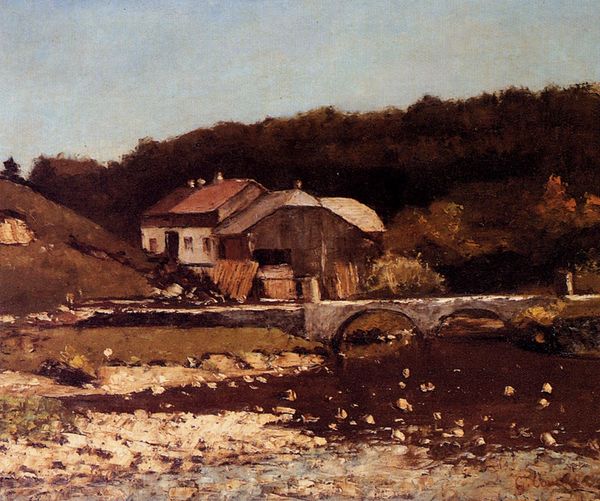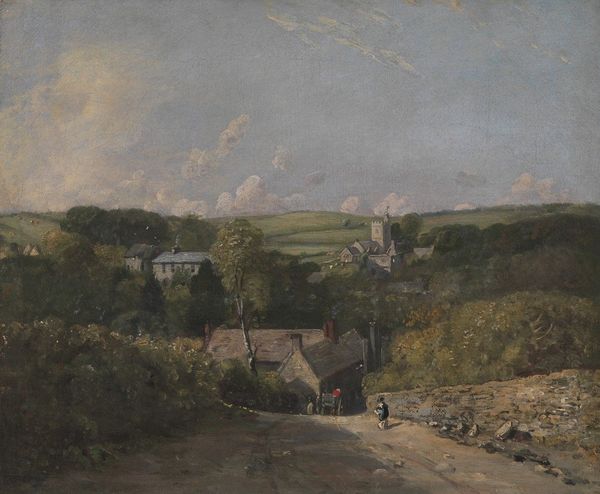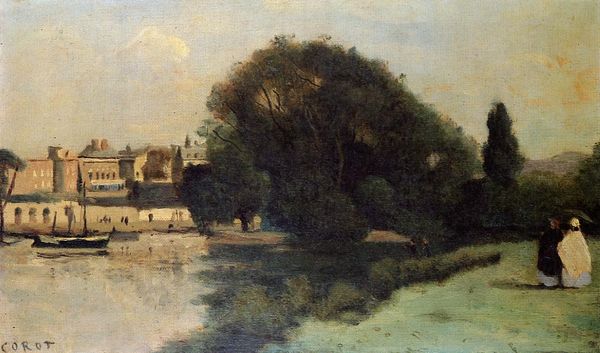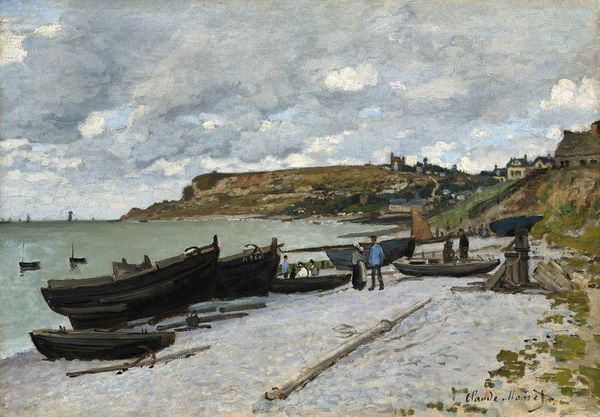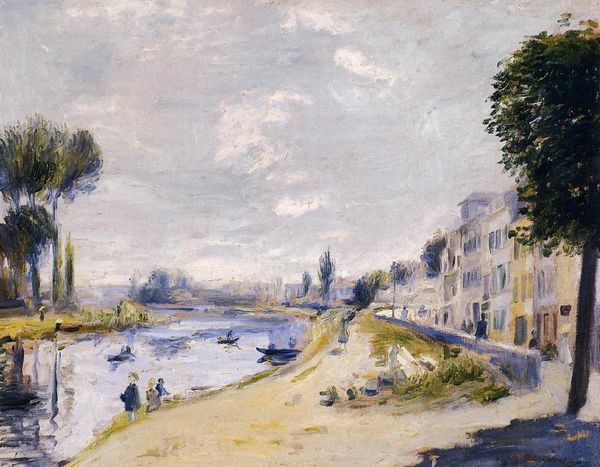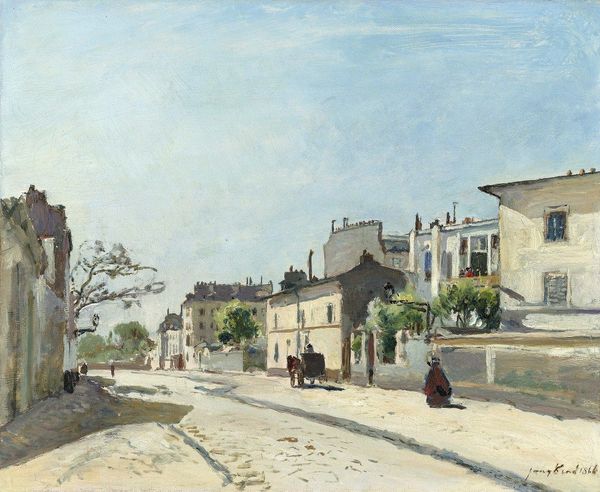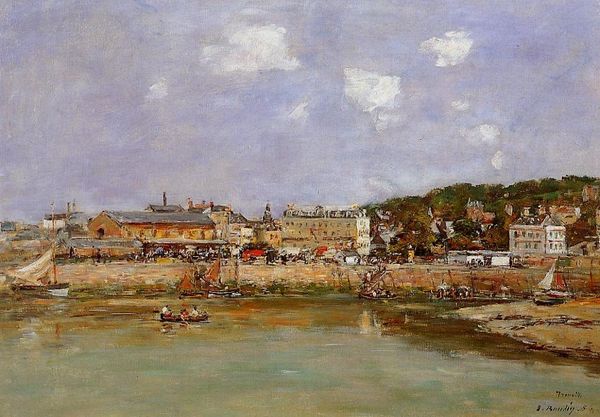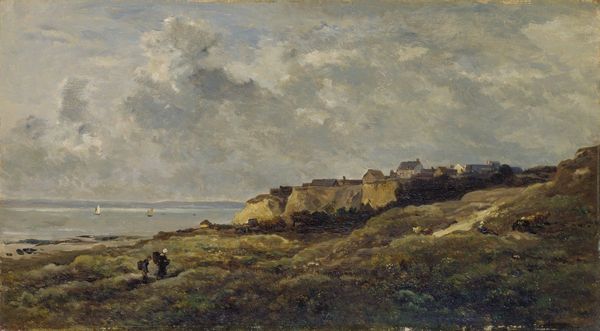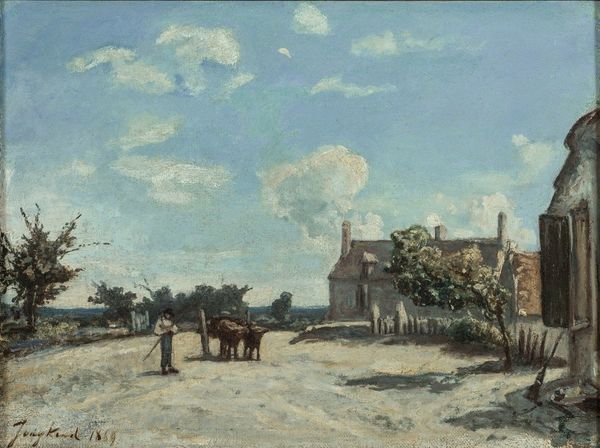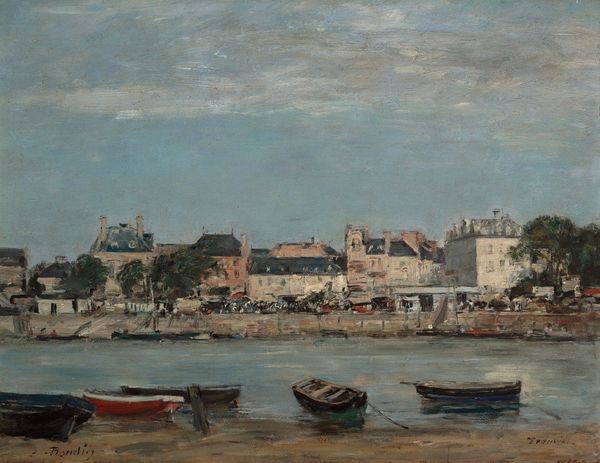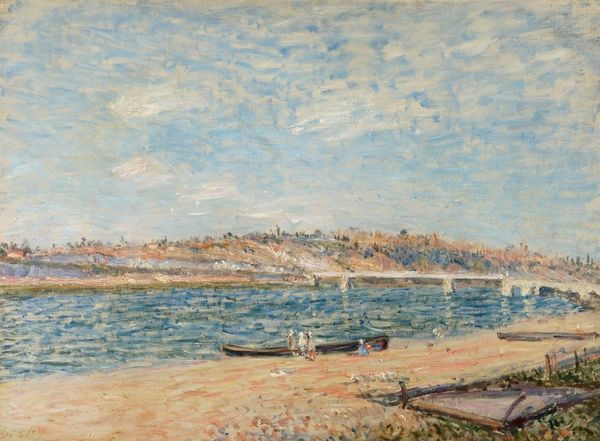
painting, plein-air, oil-paint
#
painting
#
plein-air
#
oil-paint
#
landscape
#
oil painting
#
romanticism
#
cityscape
Copyright: Public Domain: Artvee
Curator: Today, we're looking at Camille Corot's "Bridge on the Saône River at Mâcon," painted in 1834, using oil paint on canvas. Editor: My first impression is of quietude and light. The restrained palette and soft brushstrokes evoke a feeling of serene contemplation. Curator: Indeed. Corot masterfully employs a limited color scheme, predominantly earth tones and pale blues, creating a unified and harmonious composition. The structural repetition of the bridge arches is notable; each a frame unto itself showing fragments of life on the river. Editor: The bridge itself, rendered in a muted ochre, is a potent symbol. Bridges connect, both literally and figuratively, disparate worlds, facilitating communication and exchange. Curator: Certainly. But the architecture of the bridge provides something else for the composition. Notice the carefully calculated spatial relationships; the bridge spans the horizontal plane, counterpointed by the verticality of the buildings on the left. Editor: I also observe figures by the riverbank, perhaps women washing clothes. They're participating in a daily ritual, grounding the piece in a tangible human experience and hinting at women's traditional roles within this riverside community. It suggests life's persistent flow, much like the Saône River itself. Curator: And their presence reinforces the sense of scale, emphasizing the monumental presence of the bridge, and creating an excellent contrast. The surface textures in Corot's rendition—the smoothness of the water, the slight impasto suggesting stonework—further enrich the viewing experience. Editor: Ultimately, it seems Corot is less concerned with topographical accuracy and more with conveying a feeling. There is something timeless and universally appealing. The romanticism is evident not only in the style, but also the focus on feeling rather than strict precision. Curator: Yes. A feeling he achieved with exceptional attention to detail, however subtle they may be. The calculated interplay of forms is simply brilliant. Editor: This reminds us that even seemingly simple scenes can hold profound symbolic depth, a cultural memory of the landscapes in which we have lived for centuries.
Comments
No comments
Be the first to comment and join the conversation on the ultimate creative platform.

